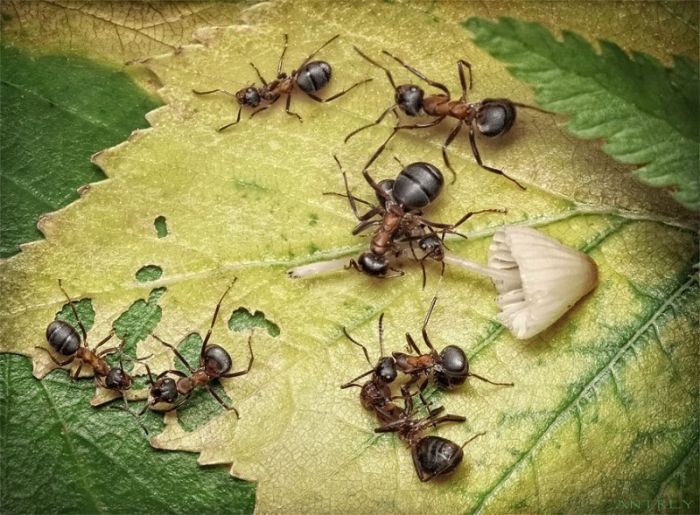|
|
Ant Stories By Andrey Pavlov
|
Anthropomorphised ants have often been used in fables and children's stories to represent industriousness and cooperative effort. They are also mentioned in religious texts. In the Book of Proverbs in the Bible, ants are held up as a good example for humans for their hard work and cooperation. Aesop did the same in his fable The Ant and the Grasshopper. In the Quran, Sulayman (Arabic: سليمان) is said to have heard and understood an ant warning other ants to return home to avoid being accidentally crushed by Sulayman and his marching army. In parts of Africa, ants are considered to be the messengers of the gods. Some Native American mythology, such as the Hopi mythology, considers ants as the very first animals. Ant bites are often said to have curative properties. The sting of some species of Pseudomyrmex is claimed to give fever relief. Ant bites are used in the initiation ceremonies of some Amazon Indian cultures as a test of endurance.
Ant society has always fascinated humans and has been written about both humorously and seriously. Mark Twain wrote about ants in his A Tramp Abroad. Some modern authors have used this example of the ants to comment on the relationship between society and the individual. Examples are Robert Frost in his poem "Departmental" and T. H. White in his fantasy novel The Once and Future King. The plot in French entomologist and writer Bernard Werber's Les Fourmis science-fiction trilogy is divided between the worlds of ants and humans; ants and their behaviour is described using contemporary scientific knowledge. In more recent times, animated cartoons and 3D animated movies featuring ants have been produced including Antz, A Bug's Life, The Ant Bully, The Ant and the Aardvark, Atom Ant, and there is a comic book superhero called Ant-Man. Renowned myrmecologist E. O. Wilson wrote a short story, "Trailhead" in 2010 for The New Yorker magazine, which describes the life and death of an ant-queen, and the rise and fall of her colony, from an ants' point of view.
The Chinese character for ant (simplified Chinese: 蚁; traditional Chinese: 蟻; pinyin: yǐ) is a combination of two logograms that may be interpreted as "insect (simplified Chinese: 虫; traditional Chinese: 蟲; pinyin: chóng) which behaves properly (simplified Chinese: 义; traditional Chinese: 義; pinyin: yì)". The traditional Chinese character yǐ (蟻) used in Japanese shares this etymology. In spoken Chinese the ant is usually referred to as mǎyĭ (simplified Chinese: 蚂蚁; traditional Chinese: 螞蟻).
From the late 1950s through the late 1970s, ant farms were popular educational children's toys in the United States. Later versions use transparent gel instead of soil allowing greater visibility. In the early 1990s, the video game SimAnt, which simulated an ant colony, won the 1992 Codie award for "Best Simulation Program".
|
|









